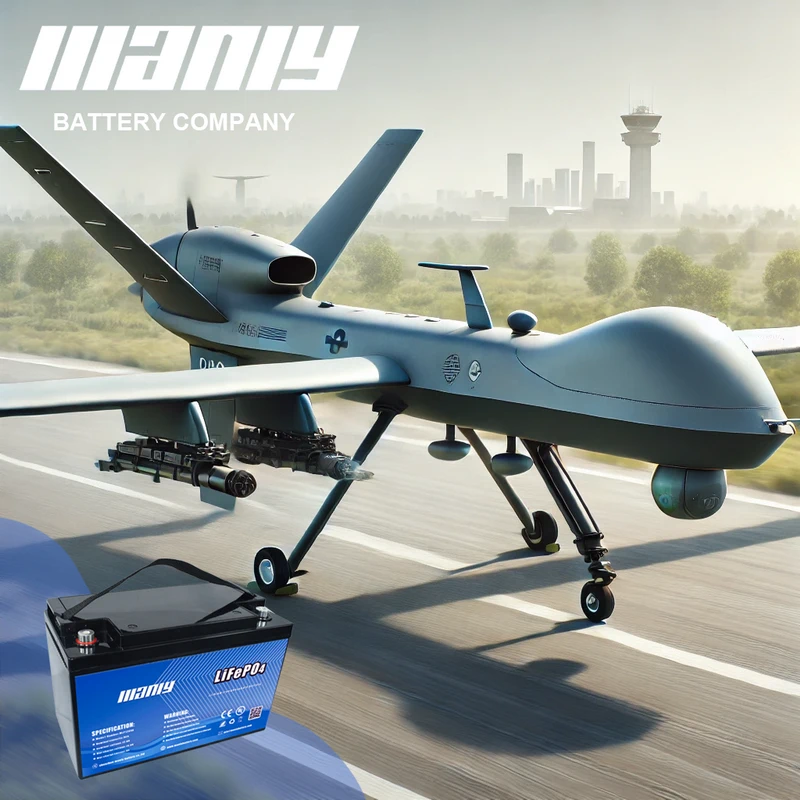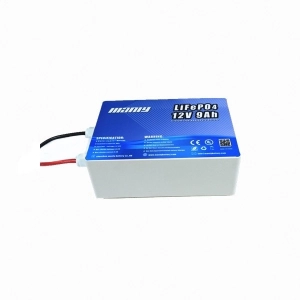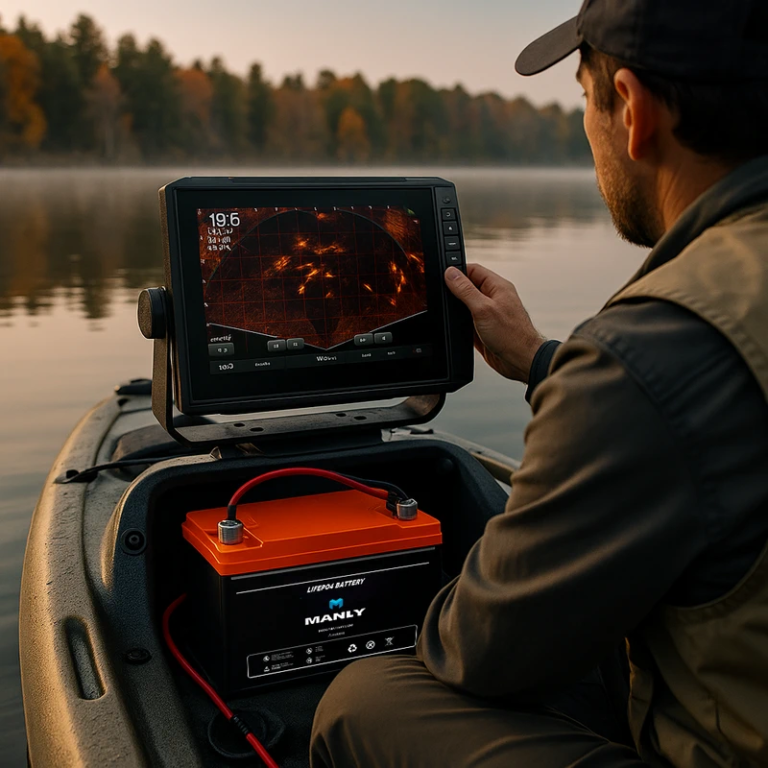Cos'è una batteria militare?
Sommario
- Cos'è una batteria militare?
- Tipi di batterie militari
- Tecnologie chiave nelle batterie militari
- Applicazioni di batterie militari
- 1. Elettronica portatile e apparecchiature di comunicazione
- 2. Veicoli aerei senza pilota (UAV) e droni
- 3. Veicoli militari elettrici
- 4. Operazioni navali e sottomarine
- 5. Sensori remoti e attrezzature di monitoraggio
- 6. Attrezzatura medica sul campo
- 7. Illuminazione sul campo
- 8. Potenza di backup di emergenza
- Considerazioni durante la selezione delle batterie militari
- Tendenze future nella tecnologia della batteria militare
- Perché scegliere la batteria virile per le tue esigenze della batteria militare?
- Conclusione
- FAQ
- Ricerca calda
- Ulteriori informazioni sulla batteria
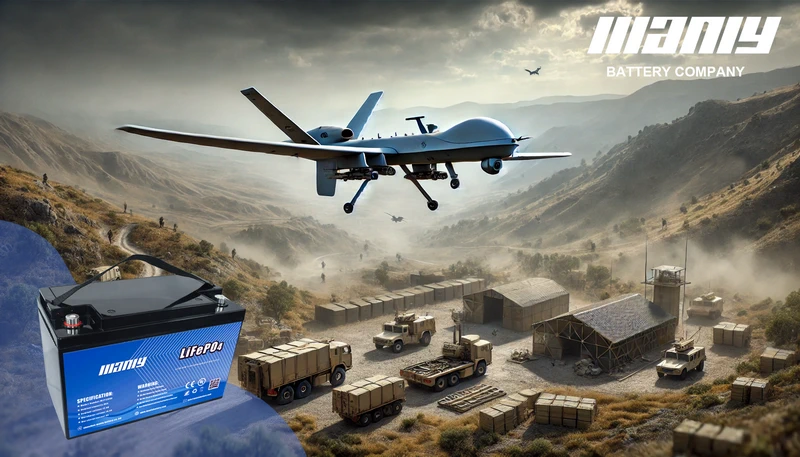
Tipi di batterie militari
Military batteries can be classified into two primary categories based on their rechargeability: non rechargeable and rechargeable batteries. Both types serve distinct functions, each tailored to different military applications where reliability and longevity are critical. Understanding the differences between these categories helps ensure the selection of the right power source for specific military needs.1. Batterie non ricaricabili perMilitare
Non rechargeable batteries, also known as primary batteries, are designed for one-time use. Once these batteries are depleted, they cannot be recharged and must be disposed of and replaced. Military batteries in this category are often chosen for their long shelf life and ability to perform in high-demand, mission-critical situations.These batteries are typically used in equipment where reliability is key, and constant recharging is impractical. Some examples include Lithium Manganese Dioxide (LiMnO2) and Lithium Thionyl Chloride (Li-SOCl2). Both of these battery types are ideal for military devices that require long operational lifespans without regular maintenance, such as in remote sensors, emergency beacons, and other portable equipment.- Diossido di manganese al litio (Limno2)Le batterie sono adatte all'uso nelle comunicazioni militari e in altri sistemi che richiedono un'elevata densità di energia e una produzione stabile per periodi prolungati.
- Litio tionil cloruro (Li-Socl2)Le batterie offrono densità di energia ancora più elevate, rendendole perfette per dispositivi militari piccoli e leggeri che devono funzionare in ambienti estremi, come i sistemi satellitari e le attrezzature di sorveglianza.
2. Batterie ricaricabili perMilitare
Batterie ricaricabili are also known as secondary batteries and are designed to be reused multiple times, offering significant advantages over their non-rechargeable counterparts. These batteries are particularly important in modern military equipment, as they reduce the need for frequent replacements and can provide a more sustainable and cost-effective power solution.Lithium Ion (Li-ion) and Lithium Ion Polymer (LiPo) batteries are common examples of rechargeable military batteries. These batteries are favored for their ability to deliver high energy output and rapid recharge times, which are essential in military scenarios where downtime must be minimized.- Litio ione (li-ion)Le batterie sono ampiamente utilizzate in applicazioni militari come droni, veicoli elettrici e attrezzature di comunicazione a causa della loro alta densità di energia e della durata più lunga. Possono sopportare migliaia di cicli di carica e fornire il potere necessario per operazioni esigenti.
- Polimero ionico al litio (lipo)Le batterie offrono il vantaggio aggiuntivo di un design più flessibile, che consente di essere utilizzati in una varietà di forme e dimensioni. Questa flessibilità è vantaggiosa per dispositivi militari compatti e portatili che richiedono una fonte di energia leggera ma potente.
Tecnologie chiave nelle batterie militari
Military batteries stand out due to the advanced technologies that power them, providing reliability and efficiency under the most demanding conditions. These batteries are engineered to support a range of military equipment, including communication systems, UAVs, electric vehicles, and advanced weaponry. The high-performance requirements of military operations demand cutting-edge technology, ensuring optimal functionality even in extreme environments. Here’s a look at some of the key technologies used in batterie militari.1. Batterie di biossido di zolfo litio (Liso2)
Lithium Sulfur Dioxide (LiSO2) batteries are widely used in military applications due to their high energy and power density. These batteries offer a long shelf life and are capable of maintaining performance over a broad temperature range, which makes them ideal for use in harsh environments where reliability is critical. The unique chemistry of LiSO2 batteries allows them to operate efficiently in both extreme heat and cold, which is especially important for military missions conducted in diverse geographic locations.Applications of LiSO2 batteries in the military include use in portable equipment such as field radios, satellite systems, and surveillance devices. Their high energy density ensures long operational times for devices that are essential during extended missions, and their ability to function in extreme temperatures allows them to be used in challenging terrains, such as the Arctic or desert conditions.2. Batterie agli ioni di litio (litio)
Lithium Ion (Li-ion) batteries are one of the most commonly used technologies in military batteries due to their efficiency, high energy density, and reliable performance. These batteries are favored for their ability to operate in a wide temperature range, from -51°C to 75°C, making them ideal for use in military equipment exposed to fluctuating weather conditions. Additionally, Li-ion batteries have a longer lifespan compared to older technologies like Nickel Cadmium (NiCd) batteries, offering higher reliability and reducing the need for frequent replacements in the field.In military applications, Li-ion batteries are commonly used to power drones, unmanned aerial vehicles (UAVs), and electric vehicles. Their lightweight nature also makes them particularly attractive for use in portable electronics and advanced weapon systems, where minimizing weight is crucial for enhancing mobility and efficiency. Furthermore, Li-ion batteries provide fast charging capabilities, reducing downtime for military equipment that needs to be ready at a moment's notice.3. Nickel Cadmium (NICD) Batterie
Nickel Cadmium (NiCd) batteries, though now largely replaced by newer technologies like Li-ion, still offer some key benefits that make them useful in certain military applications. One of the main advantages of NiCd batteries is their robust performance in extreme temperatures, especially in very cold conditions. This makes them ideal for powering equipment used in Arctic or high-altitude environments where Li-ion batteries may struggle to function effectively.Another benefit of NiCd batteries is their ability to deliver a high discharge rate, making them suitable for devices that require quick bursts of energy, such as tactical radios or searchlights. However, NiCd batteries do have some drawbacks, including their relatively lower energy density compared to Li-ion batteries and the memory effect, which can reduce their effective capacity if not properly maintained.While NiCd batteries are still used in specific military contexts, they are increasingly being phased out in favor of more efficient and long-lasting solutions like Li-ion batteries.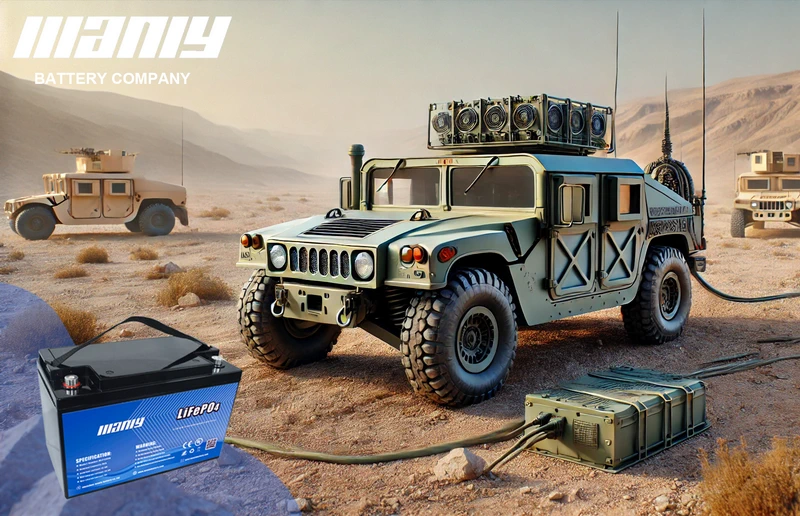
Applicazioni di batterie militari
Military batteries play an essential role in powering a wide variety of military equipment and ensuring the success of operations. From communication tools to electric vehicles, these batteries are crucial for maintaining operational continuity in remote and challenging environments. Here’s a closer look at the diverse applications of military batteries and how they support different sectors within the military.1. Elettronica portatile e apparecchiature di comunicazione
Military batteries are at the heart of powering portable electronics and communication devices, which are essential for soldiers in the field. These devices, including radios, night vision goggles, GPS units, and smartphones, rely on military batteries to ensure seamless communication and operational readiness. The ability to stay connected with command centers, coordinate movements, and access critical information is vital during missions, and military batteries provide the necessary power to maintain these capabilities for extended periods.For example, lithium-ion and lithium-polymer batteries are commonly used in military batteries for communication tools due to their light weight, long life, and high energy density, allowing troops to rely on them for long-term operations without the need for frequent replacements.2. Veicoli aerei senza pilota (UAV) e droni
The use of military batteries in unmanned aerial vehicles (UAVs) and drones has transformed modern reconnaissance, surveillance, and combat missions. Drones, which are increasingly used for intelligence gathering, targeted strikes, and surveillance, depend on high-performance military batteries to provide the long flight times and rapid recharging required for mission success.Lithium-ion (Li-ion) batteries are typically used in UAVs due to their lightweight nature and high energy capacity. This technology enables drones to fly for extended periods, enhancing their operational range and efficiency. Additionally, the ability to recharge quickly minimizes downtime, making drones more effective in fast-moving military operations.3. Veicoli militari elettrici
Electric military vehicles are gaining traction due to their low operational costs, reduced emissions, and stealth advantages. Military batteries provide the necessary power to electric vehicles, making them more efficient and environmentally friendly compared to traditional fuel-powered options.These vehicles, including electric tanks, trucks, and reconnaissance vehicles, benefit from the high energy density and quick charging capabilities of lithium-ion batteries, which power everything from propulsion to electronic systems. The quiet operation of electric military vehicles also offers a tactical advantage, allowing for stealthy movements in sensitive environments where noise could compromise security.4. Operazioni navali e sottomarine
In naval vessels and submarines, military batteries are critical for providing reliable power to essential systems, such as propulsion, communication, and navigation. These batteries are designed to perform under extreme conditions, including high pressure, low temperatures, and long durations underwater.Lithium-ion batteries are often used in modern submarines due to their high energy density, long life, and ability to recharge efficiently. Their capacity to provide sustained power in confined spaces makes them ideal for use in submarines, where operational efficiency is paramount, and resources are limited.5. Sensori remoti e attrezzature di monitoraggio
Military batteries are vital for powering remote sensors and monitoring equipment used in military operations. These devices, which are often deployed in challenging terrains for surveillance, environmental monitoring, or enemy detection, require durable batteries that can withstand harsh conditions and provide long-term reliability.Lithium-thionyl chloride (Li-SOCl2) batteries are frequently used in remote sensors due to their ability to operate over a wide temperature range and their extended shelf life, which ensures continuous operation for months or even years without needing a battery replacement.6. Attrezzatura medica sul campo
In combat situations, military batteries provide the power needed for field medical equipment, such as portable defibrillators, monitoring devices, and other life-saving tools. These devices often need to be highly portable and reliable, especially when deployed in remote or dangerous areas where access to power is limited.Lithium-ion batteries are commonly used to power these devices, offering the combination of high energy density, long cycle life, and light weight necessary for military medical teams to deliver care in the field.7. Illuminazione sul campo
Military operations often take place in low-light conditions, and military batteries are used to power portable and mobile lighting systems, ensuring safety and visibility in tactical environments. These systems include flashlights, headlamps, and larger lighting units for camps and patrols.Lithium ion batteries are frequently used for these applications, as they provide a compact, rechargeable solution that can support high-intensity lighting for extended periods. The ability to easily recharge these batteries makes them ideal for operations in areas with limited access to power sources.8. Potenza di backup di emergenza
In critical situations, military batteries serve as backup power sources to ensure continuity of operations during emergencies. These batteries provide essential power to military infrastructure and equipment in case of a power outage or other disruptions, allowing operations to continue seamlessly.Sealed lead-acid (SLA) batteries are often used in these applications due to their reliability, robustness, and ability to store large amounts of energy, making them ideal for emergency backup in military bases and field stations.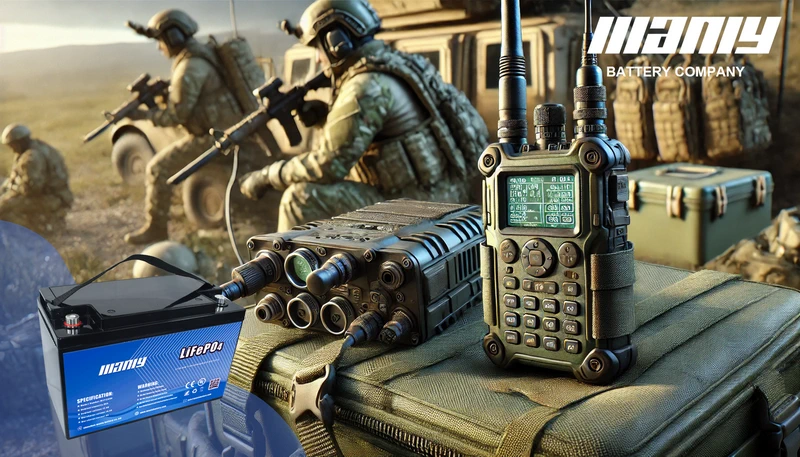
Considerazioni durante la selezione delle batterie militari
Selecting the right military battery is crucial for ensuring operational success in demanding military environments. Factors like energy density, durability, environmental adaptability, safety, and cost are key to determining which military batteries are best suited for different applications. Here are the key considerations when selecting military batteries.1. Densità energetica
Energy density refers to the amount of energy a battery can store in relation to its size or weight. For military batteries, higher energy density is essential as it allows military equipment to run for longer periods without frequent recharging, especially in energy-intensive operations.In military applications, where extended mission times are often necessary and charging stations are scarce, batteries with high energy density are critical. Equipment such as communication devices, unmanned aerial vehicles (UAVs), and medical tools all benefit from military batteries with high energy density, as these ensure continuous operation over long durations. Lithium ion and lithium-polymer batteries, known for their high energy density, are commonly used to power military devices in remote locations where maintaining a power source is a priority.- Esempio:La densità di energia delle batterie a ioni di litio varia in genere da 150 a 250 WH/kg. Ciò consente a dispositivi come gli UAV di operare più a lungo, con molti droni ora in grado di volare per oltre 10 ore con una singola carica, migliorando le capacità operative e riducendo i tempi di inattività.
2. Durabilità e affidabilità
The durability and reliability of military batteries are paramount, especially as they are often exposed to extreme conditions such as temperature extremes, humidity, physical shocks, and vibrations. Batteries used in military vehicles, field equipment, and combat systems must withstand these harsh environments without compromising their performance or safety.For instance, lithium ion batteries are increasingly being used in military applications for their ability to endure demanding conditions. These batteries can continue operating in temperatures ranging from -40°C to 60°C (-40°F to 140°F), ensuring they remain reliable in harsh environments, including those in the Arctic or desert.- Esempio: The ability of lithium ion batteries to perform reliably under stress is crucial for unmanned ground vehicles (UGVs) and communication systems that operate in remote, rugged locations. The military's use of lithium-ion batteries in these systems has significantly improved the reliability of such devices in the field, offering a combination of long life and high performance.
3. Caratteristiche di sicurezza
Safety is a top priority when selecting military batteries, as these batteries are often used in high-risk environments. The risk of thermal runaway, short-circuiting, or explosions must be minimized to ensure the safety of both military personnel and sensitive equipment.Military batteries need to include advanced safety mechanisms such as thermal stability, overcharge protection, and safeguards against overcurrent. These features are essential for preventing incidents such as fires or explosions that could occur if batteries are exposed to extreme temperatures or physical damage.- Esempio:Le batterie a ioni di litio, che sono comunemente utilizzate nelle operazioni militari, sono dotate di sistemi di gestione delle batterie (BMS) che monitorano la temperatura delle celle, la tensione e la corrente per prevenire il surriscaldamento e la fuga termica. Questo li rende più sicuri per l'uso nelle zone di combattimento in cui sono comuni temperature estreme e manipolazione approssimativa.
4. Costo e valore
While military batteries often come with higher upfront costs compared to commercial batteries, it’s essential to balance cost with long-term performance and reliability. Military organizations must factor in the battery’s lifespan, efficiency, and maintenance needs when determining its overall value.For example, lithium ion batteries have a higher initial cost than traditional lead-acid batteries, but their longer lifespan and higher performance make them more cost-effective over time. These batteries typically last 3 to 5 times longer than lead-acid batteries, reducing the need for frequent replacements and lowering long-term operational costs.- Esempio:In una tipica flotta militare, la sostituzione di batterie a ioni di litio ogni 5 anni anziché ogni 1-2 anni, come con le batterie al piombo acido, porta a notevoli risparmi sui sostituti e riduce i tempi di inattività operativi.
5. Impatto ambientale
Sustainability is increasingly a priority in military operations, and the environmental impact of military batteries is under greater scrutiny. As the military seeks to adopt more eco-friendly solutions, minimizing the carbon footprint of military batteries has become crucial.To reduce environmental impact, manufacturers are exploring more sustainable materials and improving recycling processes. For example, lithium ion batteries are more energy-efficient and have a smaller environmental footprint than traditional lead-acid batteries, which are more difficult to recycle and can lead to environmental damage when improperly disposed of.- Esempio:I militari stanno sempre più integrando i sistemi di energia solare nelle loro operazioni, riducendo la dipendenza dalle fonti di energia tradizionali. Le batterie a ioni di litio sono spesso utilizzate in tandem con questi sistemi per creare soluzioni di alimentazione sostenibili che possono essere facilmente rifornite sul campo, supportando le operazioni in aree remote minimizzando l'impatto ambientale.
6. Manutenzione e logistica
Effective maintenance and logistics are crucial for the smooth operation of military batteries. These batteries must be easy to maintain, especially when deployed in remote locations where access to replacement parts or skilled personnel may be limited.For military batteries to be truly effective, they need a long lifespan and should be easily replaceable or repairable in the field. Ensuring that spare parts are readily available and that batteries are resistant to physical damage during transport is essential for maintaining operational efficiency.- Esempio:Le batterie a ioni di litio hanno una durata significativamente più lunga rispetto alle batterie tradizionali e richiedono una manutenzione meno frequente. Ciò riduce l'onere logistico di dover sostituire o riparare le batterie durante le missioni estese. Inoltre, con l'uso di tecnologie di ricarica intelligenti che forniscono un monitoraggio della salute della batteria in tempo reale, le unità militari possono ottimizzare l'uso della batteria e prevenire guasti imprevisti.
Tendenze future nella tecnologia della batteria militare
The global military battery market is experiencing rapid growth, driven by the increasing demand for advanced power systems. With a projected market value of $8.32 billion in 2024 and an expected increase to $13.59 billion by 2030, the military power solutions market is expanding at a compound annual growth rate (CAGR) of 8.52%. This growth reflects the need for higher-performing, more energy-dense systems that support military operations worldwide, from remote outposts to advanced combat scenarios. Innovations in military batteries aim to improve energy density, miniaturization, and sustainability, all while adhering to the high-performance and safety standards required in military settings.1. Batterie a stato solido
One of the most promising advancements in military battery technology is the development of solid state batteries. These batteries use a solid electrolyte instead of a liquid one, which not only makes them safer but also more durable. Solid state batteries are less likely to catch fire or overheat compared to traditional lithium ion batteries, which is crucial for military applications where safety is paramount.The transition to solid-state batteries could revolutionize military batteries by offering higher energy densities, meaning smaller and lighter batteries that can deliver more power. These batteries also have the potential for faster charging times and longer lifespans, further enhancing the performance of military systems, including drones, electric vehicles, and communication devices. With the growing need for reliable, high-energy power sources, solid state batteries could be a game-changer for military technology in the coming years.2. Sistemi di energia ibrida
As the demands of modern warfare become increasingly complex, hybrid energy systems combining multiple power sources are gaining attention in military batteries. These systems integrate lithium ion batteries with other energy sources, such as fuel cells or supercapacitors, to provide enhanced performance and greater operational endurance.Hybrid systems could improve military batteries by offering better fuel efficiency, faster charging times, and increased reliability in diverse conditions. This flexibility allows military forces to extend operational periods, ensuring that essential equipment remains powered for longer without the need for constant recharging or battery replacements. By incorporating renewable energy sources and advanced technologies, hybrid energy systems can provide a sustainable and flexible solution to meet the needs of modern military operations.3. Soluzioni di ricarica avanzate
As military batteries become more integral to defense operations, the need for faster and more efficient charging solutions grows. Innovations in advanced charging technology are being developed to support military operations where time is a critical factor. These advancements include wireless charging and ultra-fast charging systems, which significantly reduce the time needed to recharge military batteries in the field.Faster charging times will ensure that essential equipment, such as communication systems, unmanned vehicles, and medical devices, remain operational without delays. This is especially important in combat zones where every minute counts. As military batteries evolve to meet the needs of modern warfare, these advanced charging technologies will help maintain the operational readiness of military forces, even in the most demanding environments.